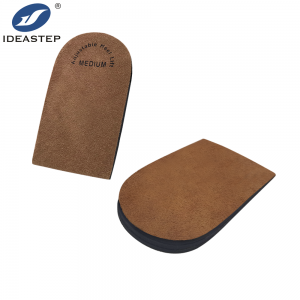
Heel lifts can be beneficial for individuals with Achilles tendonitis, depending on the specific circumstances and severity of the condition. Here’s how heel lifts can potentially help:
- Reduced Tension on the Achilles Tendon: Heel lifts can elevate the heel, effectively reducing the tension and stress placed on the Achilles tendon during activities such as walking or running. By decreasing the amount of stretch on the tendon, heel lifts can provide relief and allow the tendon to heal.
- Altered Biomechanics: Heel lifts can modify the biomechanics of the foot and ankle, which can help alleviate strain on the Achilles tendon. By raising the heel, the foot is positioned in a way that reduces the load on the tendon, allowing it to rest and heal.
- Offloading the Affected Area: If the Achilles tendonitis is localized to a specific area, such as the insertion point at the heel bone (calcaneus), a heel lift can offload that area by reducing the amount of tension and compression placed on it during weight-bearing activities.
It’s important to note that heel lifts should be used under the guidance of a healthcare professional, such as a physical therapist or podiatrist, who can assess your specific condition and determine if heel lifts are appropriate for you. They can also provide recommendations on the proper height and positioning of the heel lift for optimal results. Additionally, heel lifts should be used as part of a comprehensive treatment plan that may include stretching exercises, strengthening exercises, and other interventions to address the underlying causes of Achilles tendonitis.
Expand more related content: https://www.aideastep.com/heel-pads/.
